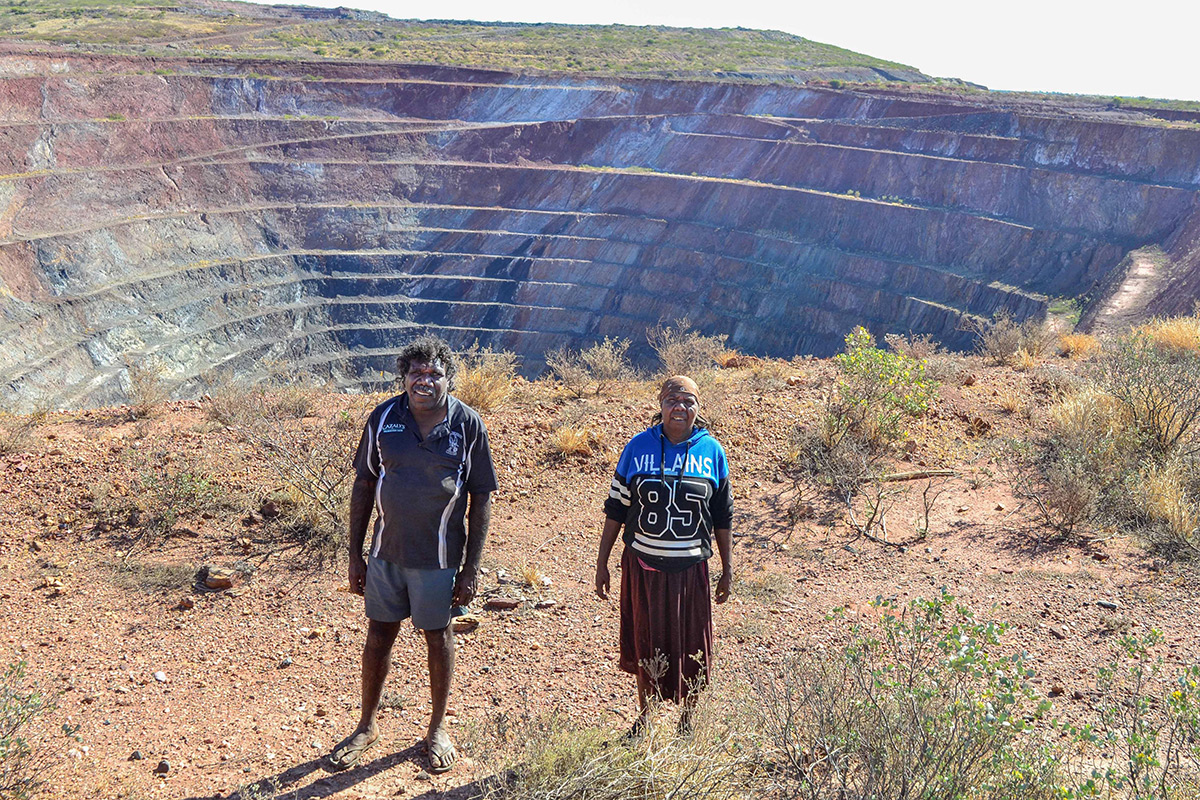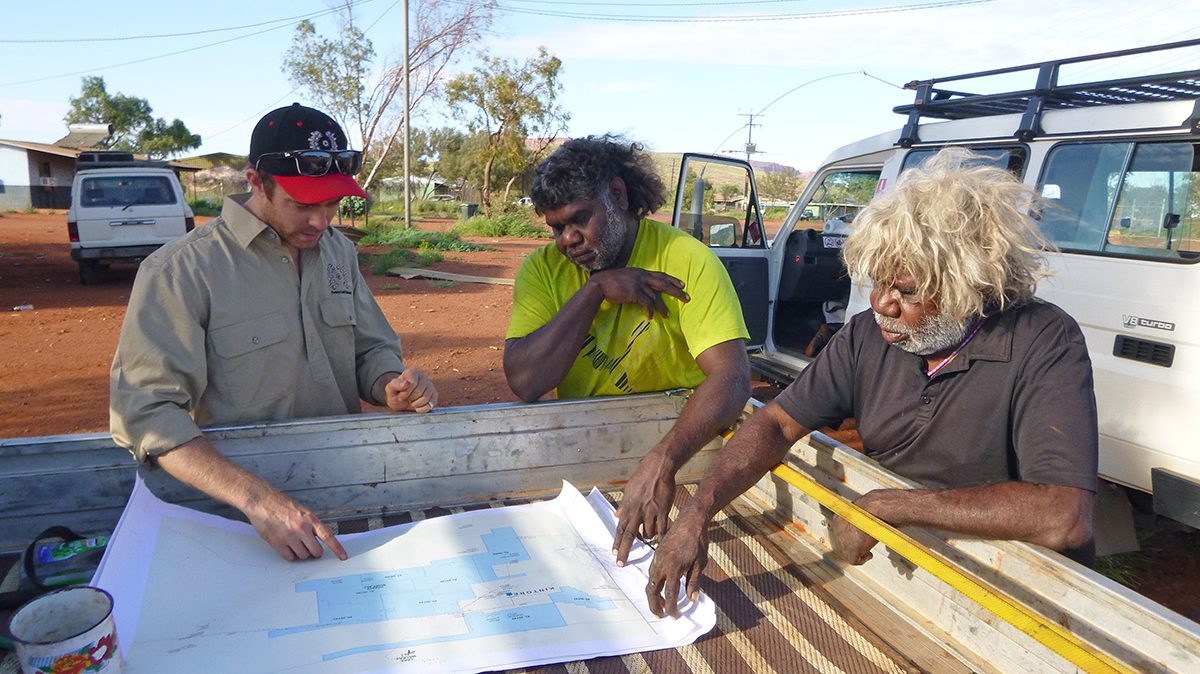Making mining agreements
Mining on Aboriginal land contributes more than 80 per cent of the Northern Territory’s total mineral value, making Aboriginal land a significant source of income for the Territory. In 2022 approximately one third of Aboriginal land was subject to existing exploration licences, or new applications under negotiation.
In our region, thousands of square kilometres of Aboriginal land are under exploration by a number of companies.
Much of the mining occurs northwest of Alice Springs in the Tanami Desert. Newmont’s Tanami Operations complex is one of Australia’s most remote and productive gold mines, producing some 500,000 ounces of gold a year.

To the east of Alice Springs, the Mereenie and Palm Valley fields produce oil and gas and the Northern Gas Pipeline and the Tanami Gas Pipeline open up new markets.
These developments occurred under the Aboriginal Land Rights (NT) Act 1976 (Land Rights Act), the most effective Aboriginal land rights legislation in Australia for Aboriginal people and resource developers alike.
The mining provisions in Part IV of the act give Aboriginal landowners meaningful control over their land while providing mining and energy interests with an ordered, transparent and equitable access procedure.
The act protects and advances the interests of traditional owners of the land, setting out the principles and processes that allow us to support free prior-informed decision making and, where Aboriginal people consent, to make mutually beneficial agreements with resource companies.
Traditional owners typically gain sacred site and environmental protection, financial compensation and employment and training opportunities.
The companies get clear, reliable and enduring surety of access and tenure.
The Land Rights Act does not allow traditional owners who have consented to exploration to refuse any subsequent mining or hydrocarbon development.
Mining involves substantial environmental impacts and can have significant social impacts on nearby communities. These affected communities are have a right to compensation.
The traditional owners’ decision at the exploration application phase is, therefore, a weighty one, and we have a legal duty to facilitate information sharing across considerable language barriers anddistances, to ensure our constituents can make informed decisions. We work hard to identify the traditional owners of land subject to application for mineral or petroleum titles, and to ensure they can attend and participate effectively in meetings to consider the applications.
As a native title representative body we also represent groups whose country is leased to pastoralists or is not subject to the Land Rights Act for other reasons.
The Native Title Act grants much weaker rights than the Land Rights Act. It gives native title holders the right to negotiate with land developers but not the right to veto exploration. We have, however, successfully negotiated land use agreements that protect sacred sites and offer reasonable financial terms, employment and training.

What we must do:
- maintain traditional owners’ right to control access to Aboriginal land
- protect and advance traditional owner and native title holder rights and interests
- inform and empower Aboriginal people to not only make decisions but give us detailed instructions about exploration, mining and energy developments
- faithfully follow these instructions
- pursue opportunities for traditional owners and native title holders to participate in exploration, mining and energy developments, in employment, sub-contracting and sacred site protection for instance
- efficiently and effectively carry out our responsibilities and functions under the mining provisions of the Land Rights and Native Title acts
- carry out contractual obligations arising from agreements for exploration, mining and energy developments


